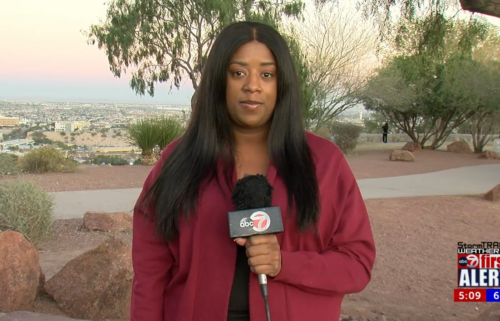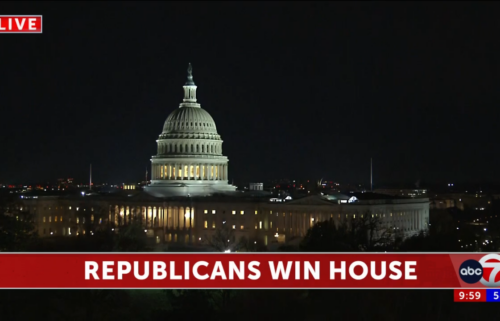The 2020 race is now caught in a deep freeze

Thanksgiving is over! Christmas is 26 days away!
Those two facts are of critical import not only to your shopping and travel plans but also to the fight for the 2020 Democratic presidential nomination. Why? That’s easy. Between Black Friday — that’s today, people! — and the extended Christmas week ending on New Year’s Day, there’s holiday music, packed malls, stress. And almost no politics.
People — even those hearty souls in Iowa and New Hampshire — simply have other things to do over the next month, things that take priority over politics in their minds. Which is why, if past is prologue, the 2020 race will freeze in place now — not to reemerge from its thaw until after New Year’s Day when people start, again, paying real attention to politics.
So, what does the race look like as it freezes in place?
We have a clear top four in former Vice President Joe Biden and South Bend Mayor Pete Buttigieg as well as Sens. Bernie Sanders (Vermont) and Elizabeth Warren (Massachusetts).That quartet are in double digits nationally as well as in the early primary states of Iowa and New Hampshire.
But, the four are not all standing equally at the moment. Buttigieg is clearly the momentum candidate of that group, with polling in Iowa and now even New Hampshire suggesting he is in the lead. National polling has been slower to catch up to Buttigieg’s momentum — he is running ads in Iowa and New Hampshire, not nationally — but even those surveys are showing positive movement upward.
In a new CNN poll, Buttigieg took 11%, the first time he has registered in double digits in the poll. Biden led the way with 28% followed by Sanders at 17% and Warren at 14%.
If that poll symbolizes Buttigieg’s rise, then it also captures Warren’s struggles of late. She’s down 5 points in the poll from a similar CNN survey in October, a drop generally consistent — and even on the smaller end of her slippage — with her numbers especially in Iowa.
It’s not yet clear what stopped Warren’s massive momentum built over the summer when she soared into the lead everywhere. But what is beyond debate is that the momentum is gone.
Sanders and Biden have generally stayed steady nationally and in early states of later, a welcome change for their supporters after dips over the past few months.
Those four — even with their ups and downs — are currently the “haves” in the race. The “have nots” are a much, much larger group — with 14 candidates among their number as of today.
Yes, it is somewhat odd to describe a group that includes not one, but two billionaires — Tom Steyer and former New York City Mayor Michael Bloomberg — as “have nots” but in political terms that’s what they are. None of this baker’s dozen plus one has been able to breakthrough and take more than mid-single digit support — at best — anywhere in the country.
And, unfortunately for this group, they are much more adversely affected by the current freeze than the top 4. Again, the reason is simple: In order to get from 2% to 20% (or higher) they need time and attention. When you cross a month off the calendar — which is, effectively, what is happening between now and the new year, you greatly reduce the opportunities for breakthrough for candidates who desperately need it.
Take Sen. Amy Klobuchar (Minnesota), who off a strong debate performance earlier this month, is trying to build momentum in Iowa. While Iowans are likely to be less affected by the 2020 freeze than other states who won’t have candidates crawling all over them in the next month, there is still a distraction factor that exists. Klobuchar has to hope that personal visits and a message aimed at shared Midwestern roots will cut through all the wrapping, shopping and mailing.
(One mitigating factor amid all of this freeze talk: The 6th debate of the 2020 Democratic race is set for December 19 in Los Angeles; at the moment, only six candidates have qualified but they have until December 12 to do so.)
Bloomberg, who entered the race less than a week ago, is trying a different sort of approach to capturing voters’ time and attention during this busiest of seasons: Spending almost $60 million on ads aimed at introducing voters to him — holidays or not.
“Mike believes that Trump is an existential threat to the country,” a Bloomberg spokesman told CNN. “He’s not waiting to take on the President, he’s starting now. This is all hands on deck.”
Bloomberg, whose personal wealth is estimated at north of $50 billion, is focusing his ad spending on large population states — Texas, California and North Carolina — that will vote on Super Tuesday March 3. His belief is that the race will muddle through the first four votes and remain very much an open contest heading into March — at which point his personal wealth will come to bear in a major way.
It remains to be seen whether Bloomberg’s spending can thaw the freeze. But, if past is prologue, even Bloomberg’s millions (and millions) may fall on ears listening to holiday tunes rather than political ads.
Even if the freeze holds through January 1, it doesn’t mean that the candidates in the “have nots” at the moment can’t change their fate before the first vote of the presidential race on February 3, 2020. A lot can change in a single month — as this race has already taught us. (A month ago Warren looked like she was going to run away with the nomination; now, not so much.)
But the window of opportunity is likely frozen shut until the new year. Then the rapid thaw will begin.




